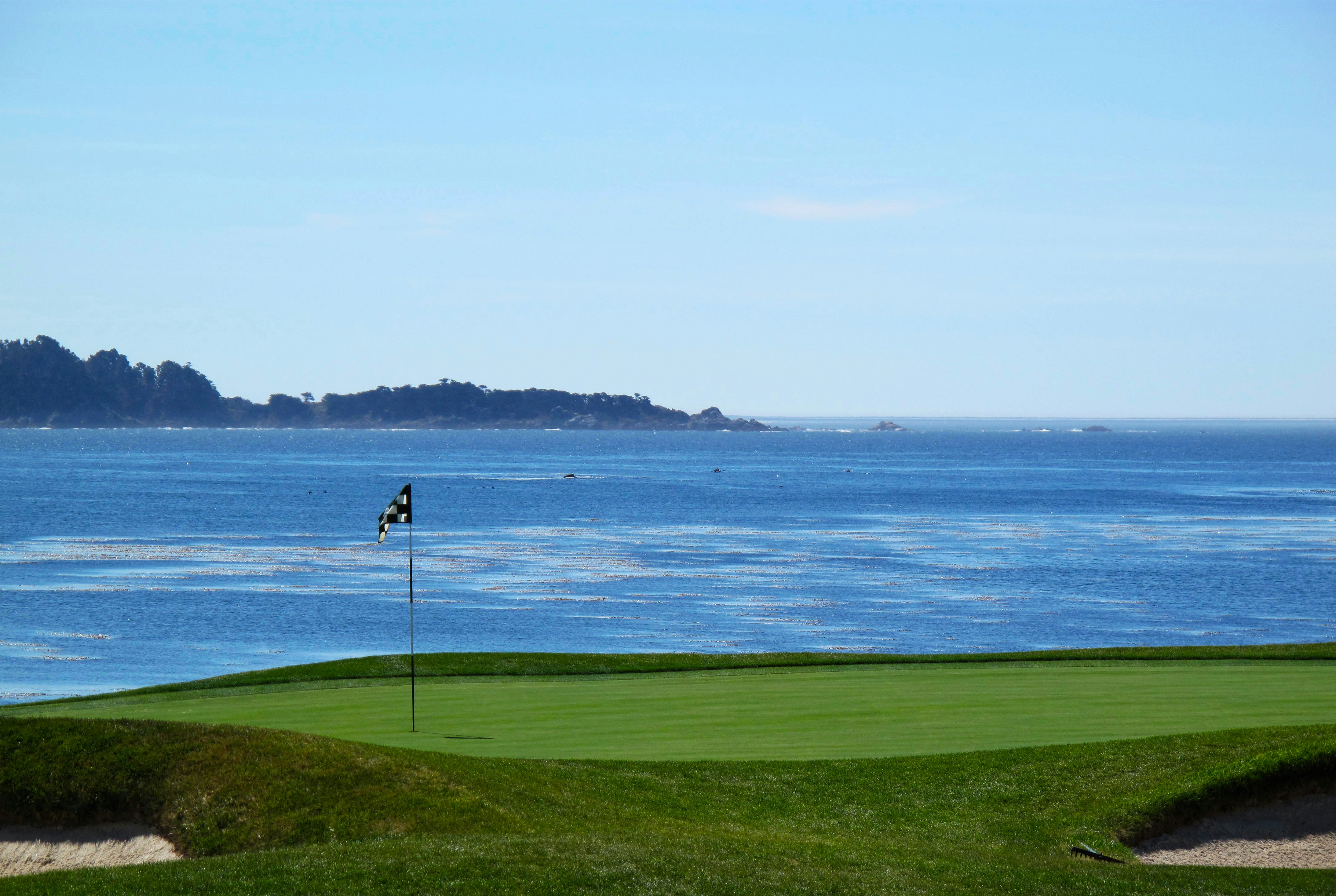If you’ve recently taken an interest in golf and find yourself pondering the question, “What golf clubs do I need as a beginner?” – fret not! In this article, we’ll provide you with a concise and practical guide to help you navigate the world of golf clubs as a beginner. Whether you’re a complete novice or someone eager to brush up on their golfing basics, we’ve got you covered. By the end of this article, you’ll have a clear understanding of the essential golf clubs that every beginner should consider investing in, setting you up for success on the greens.
Types of Golf Clubs
Drivers
Drivers are the longest clubs in a golfer’s bag and are designed for maximum distance off the tee. They typically have the largest clubheads and the longest shafts. Drivers are used to hit the ball off the tee and are crucial for achieving long drives. They have a low loft angle, which helps generate more distance but requires precision in aim and timing.
Fairway Woods
Fairway woods are versatile clubs that are used both off the tee and from the fairway. They have smaller clubheads than drivers and are designed to provide distance and accuracy. Fairway woods have a slightly higher loft angle than drivers, making them easier to hit off the ground. They are ideal for long shots where distance and control are required.
Hybrids
Hybrids are a combination of irons and fairway woods, offering the best features of both clubs. They have a larger clubhead and a shorter shaft compared to fairway woods, which makes them easier to control. Hybrids are perfect for hitting long shots from the rough or fairway, as they help to get the ball airborne quickly and provide forgiveness on mishits.
Irons
Irons are the most commonly used clubs in a golfer’s bag and are essential for shaping shots and accuracy. They have smaller clubheads compared to woods and hybrids, allowing for better precision. Irons are used for shots from the fairway, rough, and tee. They are available in various types, including long irons, mid irons, and short irons, each with different loft angles and lengths.
Wedges
Wedges are highly specialized clubs designed for specific shots around the green. They have the highest loft angles among all the clubs in a golfer’s bag, allowing for high trajectory and maximum spin. Wedges are used for shots like chip shots, bunker shots, and pitch shots. They come in different types, including the lob wedge, pitching wedge, sand wedge, and gap wedge.
Putters
Putters are used for the most important part of the game – putting. They have a flat clubhead with a loft angle almost close to zero. Putters are used on the greens to roll the ball into the hole. They come in different shapes and designs, such as mallet putters and blade putters, to suit individual preferences and putting styles.
Factors to Consider
When selecting golf clubs, there are a few essential factors you should consider to ensure you find the right clubs for your game.
Skill Level
Your skill level plays a crucial role in determining the type of clubs you should choose. Beginners typically benefit from clubs that are forgiving and easy to hit, while more experienced players may need clubs with greater control and workability. It’s important to assess your skill level honestly and choose clubs that align with your abilities.
Physical Fitness
Physical fitness can impact your club selection. Players with slower swing speeds may benefit from clubs with a higher loft angle, as they help generate more distance. On the other hand, players with faster swing speeds may opt for lower loft angles to maximize distance. Additionally, your height and strength can also influence the length and flex of the shafts you choose.
Budget
Your budget is another important factor to consider when purchasing golf clubs. Golf clubs can vary widely in price, and it’s essential to set a budget that aligns with your financial constraints. While it’s tempting to invest in high-end clubs, beginners can find quality clubs that are more budget-friendly without compromising on performance.
Course Conditions
Understanding the conditions of the course you primarily play on can influence the type of clubs you’ll need. Courses with wide fairways and minimal hazards may warrant a different set of clubs compared to courses with tight fairways and numerous hazards. Consider the layout, length, and overall difficulty of the courses you play to make informed decisions about your club selection.
Essential Clubs for Beginners
If you’re just starting with golf, it can be overwhelming to navigate through the myriad of club options available. To simplify your club selection, here are the essential clubs for beginners:
Driver
A driver is a must-have club for any beginner. It offers maximum distance off the tee and sets the stage for a successful round. Look for a driver with a large clubhead size and a higher loft angle, as this will help with forgiveness and elevation. A lightweight and forgiving driver can also make it easier to achieve better results, even on off-center hits.
7-iron
The 7-iron is another important club for beginners. It offers a good balance between distance and control and is versatile enough to be used for both longer approach shots and shorter shots around the green. Choose a 7-iron with a cavity-back design, as it provides forgiveness on mishits and helps build confidence as you develop your swing.
Pitching Wedge
The pitching wedge is a crucial club for short approach shots and shots around the green. It has a high loft angle, allowing for high trajectory and soft landings. The pitching wedge is used for shots requiring more precision and control, making it an indispensable club for beginners looking to improve their scoring.
Putter
The putter is perhaps the most important club in your bag. It’s used to roll the ball into the hole on the greens and can significantly impact your overall score. Look for a putter that feels comfortable in your hands and suits your putting stroke. Experiment with different lengths and grip styles to find the one that works best for you.
Optional Clubs
In addition to the essential clubs, there are a few optional clubs that you can consider adding to your bag as you progress in your golfing journey:
3-wood
The 3-wood is a versatile club that can be used both off the tee and from the fairway. It offers a balance between distance and control, making it a valuable addition to your arsenal. The 3-wood can be particularly useful on longer par-5 holes or tight fairways where a driver may be too much club.
5-iron
The 5-iron provides an excellent combination of distance and precision. It can be used for longer approach shots or when you need more control than what a hybrid or fairway wood can offer. Adding a 5-iron to your bag gives you more options for different shot scenarios and allows for better gap coverage between your other clubs.
Sand Wedge
The sand wedge is specifically designed to help you escape from greenside bunkers and navigate through soft sand. It has a wide sole and a high loft angle, allowing the club to glide through the sand and lift the ball onto the green. If you frequently find yourself in bunkers, a sand wedge can be a game-changer.
Hybrid
A hybrid combines the control of an iron with the forgiveness and distance of a fairway wood. It’s an excellent club for long shots from the rough and fairway, providing more forgiveness on mishits. Adding a hybrid to your bag can help bridge the gap between your irons and fairway woods, providing versatility in various on-course situations.
Driver
Features and Function
The driver is designed to provide maximum distance off the tee. It has a long shaft and a large clubhead, which, when combined with a well-executed swing, can launch the ball down the fairway. The driver is used primarily on par-4 and par-5 holes, where distance is crucial to set up a shorter approach shot.
Clubhead Size
The clubhead size of a driver typically ranges from 440cc to 460cc. A larger clubhead size typically offers a higher moment of inertia (MOI), resulting in increased forgiveness on off-center hits. The larger sweet spot with a larger clubhead size can also help generate greater ball speed, leading to longer drives.
Loft Angle
The loft angle of a driver refers to the angle of the clubface. It typically ranges from 8 to 14 degrees, with a lower loft angle producing a lower trajectory and more roll. Beginners often benefit from drivers with a higher loft angle, as it helps get the ball airborne easily and adds forgiveness on mishits.
Shaft Material
Driver shafts are commonly made from graphite, which provides more flex and lighter weight compared to steel shafts. The flex of the shaft determines how the clubhead reacts during the swing. Beginners with slower swing speeds generally benefit from a shaft with a higher flex, as it can help generate more distance.
Grip Type
The grip of a driver is an essential factor to consider, as it directly affects your control and comfort during the swing. There are various grip types available, including rubber and corded grips. Beginners may prefer a grip with a softer and tackier feel, as it can help prevent the club from slipping in their hands.
Fairway Woods
Usage and Benefits
Fairway woods are versatile clubs that are used primarily for shots from the fairway, but can also be employed off the tee. They are effective for longer approach shots and can offer an alternative to a driver when accuracy is more important than distance. Fairway woods are designed to provide forgiveness and control for shots played from the fairway or off the tee.
Clubhead Design
The design of a fairway wood’s clubhead plays a significant role in its performance. The clubhead shape and weight distribution affect the center of gravity (CG) and result in varying launch angles and spin rates. Beginners often benefit from fairway woods with a larger clubhead size and a deeper CG, as it provides more forgiveness on off-center hits.
Loft Angles
Fairway woods have loft angles typically ranging from 15 to 24 degrees. Higher loft angles help get the ball airborne quickly and provide more carry distance, while lower loft angles result in lower trajectories and more roll. Beginners may find fairway woods with a higher loft angle easier to hit and more forgiving on mishits.
Shaft Flex
The shaft flex of fairway woods is an important consideration, as it influences the clubhead’s behavior during the swing. Players with slower swing speeds generally benefit from a softer flex, as it can help generate more distance and height. However, players with faster swing speeds may prefer a stiffer shaft for better control and accuracy.
Clubhead Materials
Fairway woods are typically made from materials such as stainless steel, titanium, or composite materials. Each material has its characteristics, which can impact the performance of the club. Stainless steel fairway woods are often more affordable and offer good forgiveness, while titanium fairway woods typically provide more distance due to their lighter weight.

Hybrids
Advantages for Beginners
Hybrids have become increasingly popular among golfers of all skill levels, including beginners. They are designed to be forgiving and easy to hit, making them an excellent alternative to harder-to-hit long irons. Hybrids combine the forgiveness of a fairway wood with the accuracy and control of an iron, making them ideal for players seeking versatility and forgiveness.
Clubhead Design
Hybrids feature a unique clubhead design that combines features from both fairway woods and irons. The clubhead is typically larger than long irons, providing a larger sweet spot and more forgiveness on off-center hits. This design helps new golfers achieve better results, even when their swings may not be perfectly on target.
Usage in Different Situations
Hybrids can be used for a variety of shots, making them versatile clubs in a golfer’s bag. They are particularly effective for shots from the rough or fairway, as the larger clubhead design helps get the ball airborne quickly. Hybrids can be used to replace long irons, providing more forgiveness and distance on those longer shots.
Shaft Length and Flex
Shaft length and flex are important considerations when choosing a hybrid. The length of the shaft affects the overall feel and control of the club, with longer shafts generally providing more distance. The flex of the shaft influences how the clubhead reacts during the swing, with a softer flex helping beginners generate more distance. It’s important to find the right combination of length and flex for your swing speed and comfort.
Irons
Different Types of Irons
Irons are categorized into three main types: long irons, mid irons, and short irons. Long irons (2-4 irons) have lower lofts and are typically used for longer shots, while mid irons (5-7 irons) bridge the gap between long irons and short irons. Short irons (8-9 irons and pitching wedge) have higher lofts and are used for shorter approach shots and shots around the green.
Understanding Iron Numbers
Iron numbers refer to the different irons in a set and represent the loft angle of each club. The lower the number, the lower the loft, and the longer the distance the club is designed to achieve. Beginners often benefit from a set of irons that includes a wide range of lofts, providing options for different shot scenarios.
Clubhead Design
Iron clubheads come in various designs, including cavity-back, blade, and game-improvement designs. Cavity-back irons have a cavity on the back of the clubhead, which redistributes weight and enhances forgiveness. Blade irons have a traditional design with a consistent weight distribution, offering greater control for skilled players. Game-improvement irons combine forgiveness and control, making them suitable for beginners.
Shaft Options
Irons can be customized with different shaft options to suit individual preferences and swing characteristics. The shaft material, flex, and weight all influence the performance of the club. Beginners often benefit from graphite shafts, as they provide a lighter weight and more flex, helping generate more distance. Steel shafts, on the other hand, offer more control and consistency for experienced players.

Wedges
Types of Wedges
Wedges are designed to provide precise control and versatility around the greens. They come in various types, including the lob wedge, pitching wedge, sand wedge, and gap wedge. Each wedge has different loft angles and is used for specific shots. Understanding the various wedge types can help you improve your short game and scoring.
Lob Wedge
The lob wedge has the highest loft angle among all the wedges, typically ranging from 58 to 64 degrees. It is used for high, soft shots that require the ball to stop quickly on the green. Lob wedges are ideal for shots over hazards or when you need to loft the ball high and land it softly.
Pitching Wedge
The pitching wedge is a versatile club that is used for a range of shots around the green. It has a loft angle between 44 and 48 degrees, making it suitable for both shorter approach shots and chip shots. The pitching wedge provides good control and can be effective for shots that require precision and accuracy.
Bounce Angle
The bounce angle of a wedge refers to the angle between the leading edge and the lowest point on the sole. Higher bounce angles are more forgiving and can prevent the club from digging into the ground on softer turf or in sand. Lower bounce angles are better suited for firm turf conditions or for players who take shallow divots.
Clubhead Design
Wedges often have specific design features to enhance performance. Cavity-back designs offer more forgiveness on off-center hits, while blade designs provide more control and workability. Wedges with larger sweet spots can help maintain consistent distance and accuracy, making them suitable for beginners looking to improve their short game.
Putters
Importance of a Putter
The putter is arguably the most important club in a golfer’s bag. It is used to roll the ball into the hole on the greens and can significantly impact your overall score. Putting accounts for a significant portion of strokes in a round of golf. Finding a putter that suits your style and feels comfortable in your hands is crucial for improving your putting game.
Putter Design
Putters come in various designs, each offering a unique feel and performance characteristics. The most common putter designs are blade and mallet putters. Blade putters have a traditional and more compact design, ideal for golfers who prefer a simpler look and a traditional feel. Mallet putters, on the other hand, have a larger and more forgiving design, providing stability and alignment aids.
Mallet Putters
Mallet putters typically have a larger clubhead size and a more complex design. They often feature alignment aids, such as lines or dots, to assist with aiming. Mallet putters offer more forgiveness on mishits and can help golfers achieve better consistency and accuracy on the greens.
Blade Putters
Blade putters have a simpler design and a smaller clubhead size. They are favored by golfers who prefer a traditional look and feel. Blade putters offer more feedback on impact and can provide better distance control for skilled players.
Putter Length and Grip
Putter length is an important factor to consider when selecting a putter. The length affects the overall balance and control of the club. The length should be customized to suit your height, posture, and putting stroke. Experimenting with different lengths can help you find the optimal length for improved consistency and comfort.
The grip of a putter is also crucial for achieving a solid and comfortable grip. There are various grip styles available, including pistol grips and oversized grips. The grip size and style should be chosen based on personal preferences and the feel that suits your hands and stroke.



